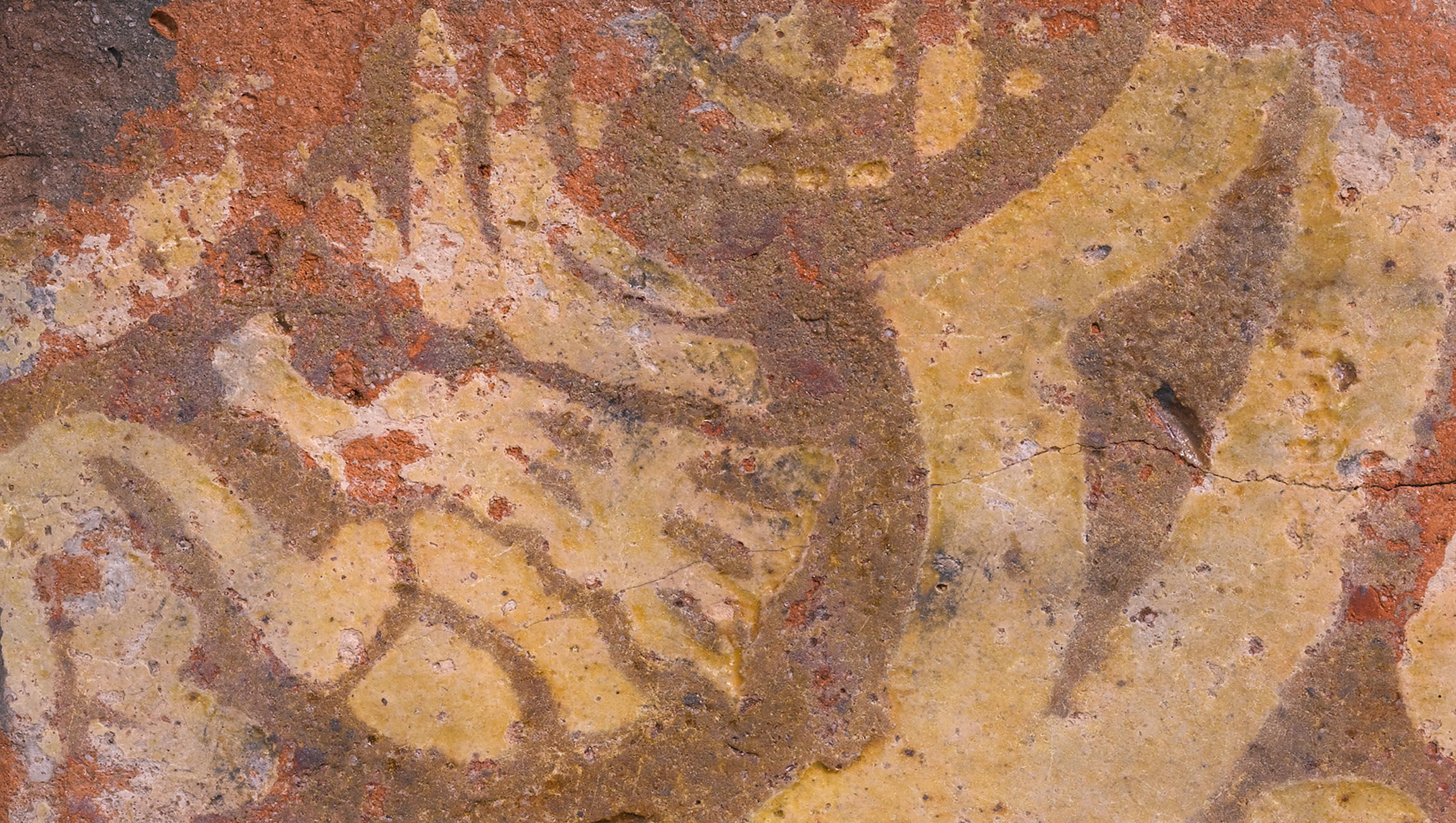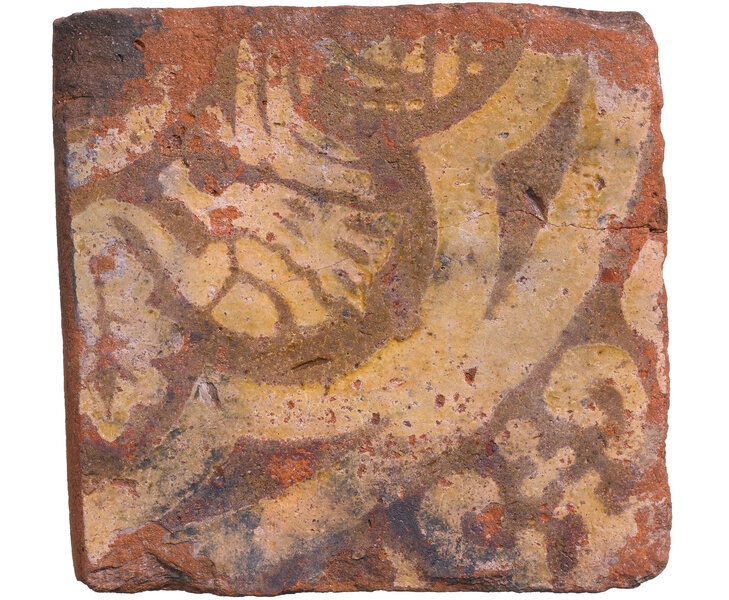Create a free profile to get unlimited access to exclusive videos, sweepstakes, and more!
Strange mythical beast tile emerged from…a medieval toilet

Out of all the bizarre things you might encounter in a public bathroom, some creature with a human(ish) head and the body of an unidentified animal was probably not what you had in mind.
Medieval denizens of London had to go just like the rest of us. The cesspit lurking beneath the city’s famous Courtauld Gallery must have seen a lot of things before it was forgotten under the art museum. Recent excavations by a team from MOLA (Museum of London Archaeology) have revealed fascinating artifacts, including a tile painted with a mythical creature that vaguely resembles a lion or dragon with a questionably human face.
So many questions. How did it get there? Does it symbolize anything? What even is it?
Whatever creature is on that tile found among the refuse is not entirely clear. Neither is its significance. The cesspit was unearthed during gallery renovations and is thought to be what remains of a mysterious 15th century residence on the Strand. What the area was like in the distant past remains largely unknown.
The tile is a medieval type usually found in cathedrals and posh royal palaces and castles — a far cry from an underground cesspit.
It could have ended up there by accident. However, this cesspit belongs to the type of place wealthy bishops lived in, so it wouldn’t be surprising if someone had enough gold to commission tiles like this for their bathroom. So is the creature a demon? In a sick way, it sort of makes sense that the filthiest part of a bishop’s place would hide a hellfire-spawn that was believed to possess people and tempt them to commit egregious sins. Not like bishops at the time acted so holy themselves.
Maybe it’s a sphinx or a manticore? Both mythical beasts were imagined to have a human head and haunches of a lion, not to mention a craving for human flesh, except the manticore appears in medieval art much more often. Maybe the leaf-like tail was meant to resemble a manticore’s scorpion sting. There might be a clue in the paint. The brownish dried-blood hue it is now may have once been much brighter, and manticores were supposed to be blood red. Imagine just sitting there and doing your business until you came eye to eye with something that wanted to eat you.
Whatever this creature reveals itself to be, it probably doesn’t exist, so you can sleep tonight.
(via MOLA)















